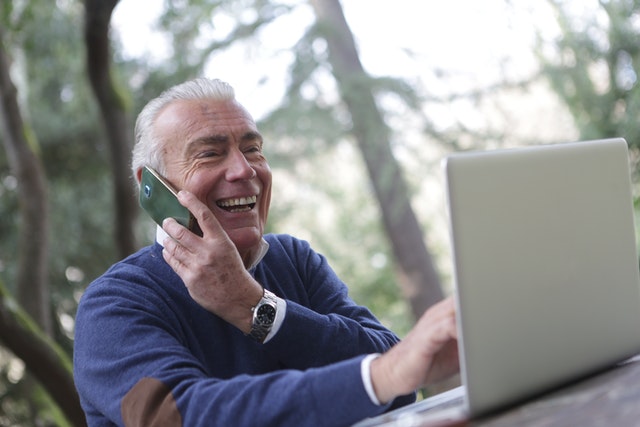When Kristen Tyler was caring for her father, she didn’t know that the federal government had programs that could help her dad afford the thousands of dollars his health care and medications cost. Now Tyler is helping others learn about the Medicare Savings Programs (MSPs).
“Everything was so expensive, and we were drowning in debt,” says Tyler, who is a senior programs coordinator for SC Thrive, a South Carolina community organization that helps connect people to government and other resources that can improve their quality of life. “We didn’t know about any of these programs.” Tyler’s dad passed away before the 33-year-old Columbia, South Carolina, resident began her current position last year.
SC Thrive is partnering with AARP Foundation to get the word out about a number of the MSPs that can save low-income Medicare beneficiaries more than $7,000 a year in out-of-pocket health care costs.
Depending upon which program enrollees qualify for, their monthly Part B monthly premium — $170.10 in 2022 — can be paid for, as well as other out-of-pocket copays and coinsurance charges. Part B covers doctor visits, diagnostic tests and other outpatient services. People who qualify for one of the MSPs can also enroll in another program called Extra Help, which helps pay for Part D prescription drug plan premiums and copays.
“These programs put money back in people’s pockets that can help them afford healthier foods, afford health care and really secure the essentials — which is what we’re about at the foundation,” says Nicole Heckman, AARP Foundation’s director of benefits access.
In an effort to remove barriers to people’s ability to participate in the Medicare Savings Programs, AARP Foundation has started an outreach campaign and is funding local organizations like SC Thrive in an effort to make more people aware of the MSPs. The campaign has started in three states (Alabama, Mississippi and South Carolina), and the foundation hopes to expand it in the coming months. To find out if you qualify for these programs, call AARP Foundation at 855-510-2107 and you will be directed to a resource in your state that can answer questions and help you apply. Each state also has a State Health Insurance Assistance Program (SHIP) with counselors who can walk Medicare beneficiaries through the steps to apply for an MSP.
In her outreach work, Tyler visits senior centers, houses of worship, farmers markets, barber shops and beauty salons — anywhere older folks congregate. She even stops by doctors’ offices to spread the word. “If I can take one person’s stress away, I feel I’ve done my good deed for the day,” she says.
“At SC Thrive, our mission is to take our patrons from crisis to self-sustainability,” Tyler explains. “We want to make sure people know about the benefits and the resources.” She says she doesn’t want older Americans to have to decide whether they can pay for food and insurance or get their medications.
More than 10 million Medicare beneficiaries are enrolled in an MSP. Over the years, studies have shown that many more enrollees are unaware that they might qualify for such assistance.
Whether someone qualifies for an MSP varies by state, and there are income asset thresholds. In general, an individual’s monthly income cannot exceed $1,549, and a married couple’s income cannot be higher than $2,080. In addition, an individual’s assets cannot be greater than $8,400, and a married couple’s assets cannot exceed $12,600.
Medicare Savings Programs
Here are the four MSPs that beneficiaries with a low income may qualify for.
- The Qualified Medicare Beneficiary (QMB) program helps pay for Part A and Part B premiums, as well as deductibles, coinsurance and copays. If you qualify for this program, you also automatically qualify for the Extra Help prescription drug program to assist you with the out-of-pocket costs of your medicines. This program has the lowest income threshold of the four.
- The Specified Low-Income Medicare Beneficiary (SLMB) program helps pay only for Part B premiums, not the Part A premium or other cost sharing. If your income is too high to qualify for the QMB program, you might qualify for this one. You also automatically qualify for Extra Help for prescription drugs. The Extra Help program is designed to help people with limited resources pay for Part D prescription drug plan premiums, deductibles and copays. You can apply through the Social Security Administration.
- The Qualifying Individual (QI) program only helps pay for Part B premiums, not the Part A premium or other cost sharing. If your income is too high for QMB and SLMB, you might qualify for QI. To get help from this program, you must reapply for benefits every year. Funding is limited, so these benefits are first come, first served. However, priority is given to individuals who received help through this program the previous year.
- The Qualified Disabled and Working Individuals (QDWI) program only helps pay for Part A premiums. This program is designed for individuals with disabilities who are younger than 65 and are currently working.
https://www.aarp.org/health/medicare-insurance/info-2022/medicare-savings-program.html



